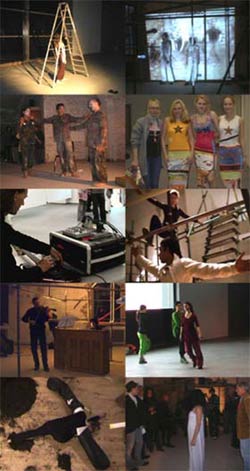
introduction
transitstation is an ongoing, international exhibition as event featuring diverse genres of experiencing art including:
- performance art
- physical theatre and dance
- experimental electronica
- classical music
- sound art and installation
- video
- poetry
- fashion
- intervention
- lecture
An invitation to enter an art exhibition of another kind.
Cultural and creative boundaries are met and shared between international Artists and viewers alike. The exhibition presents live 'images' of Music, Performance Art, Poetry, Fashion, Film and Video, Installation, Drawing, Dance and Theatre. The exhibition introduces a unique selection of artists participating at transitstation Copenhagen in 2010. Together as a whole, artists will create the exhibition as event: transitstation.
The event gathers a complexity of art practices from the areas of fine art and performing arts testing the grounds of conventional definitions beyond any stage expectations. The exhibition as event is the umbrella, which gathers multiple approaches and assumes the space of live experiences for the duration of 12 hours on each day of the weekend.
transitstation stands for a hybrid action image, where the picture itself as 'Gesamtkunstwerk' remains as ideal totality. During the weekend the 'witness-visitor' perseveres an attention level and discovers how the multitude of personalities and discourses of artistic practise assumes a valuable, democratic space: the event.
However the coordination of curational aspects allow for an adventurous insight into the presence and absence of artwork even when seen only for a short while. The exit and entrance of the exhibition space opens a path through a scaffolding system, a labyrinth sculpture, which activates the live experience in flux of different works and introduces a consistent central conviction to the notion of change.
The idea of a transitstation event is based on the changing artistic and social dynamics during the performance weekend. Visitors can be passive, albeit contemplative, or be actively involved in the dynamics of the event. The viewer and the artist share a hidden correlation, which cannot be detected empirically but simply stays speculative.
Written by Dagmar I. Glausnitzer-Smith, November 2009